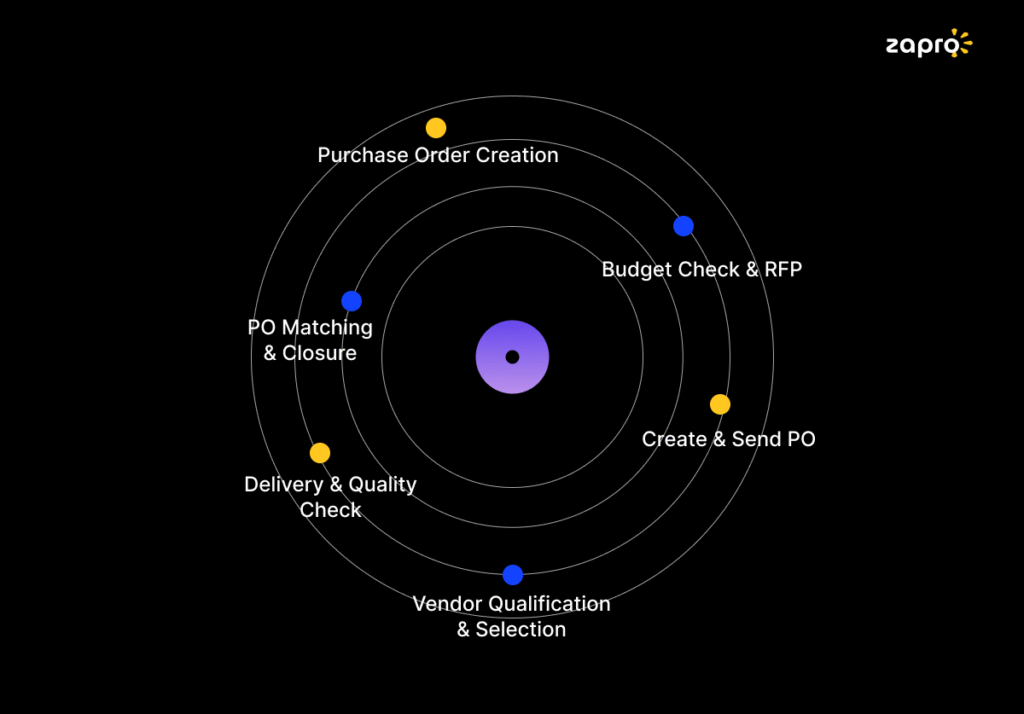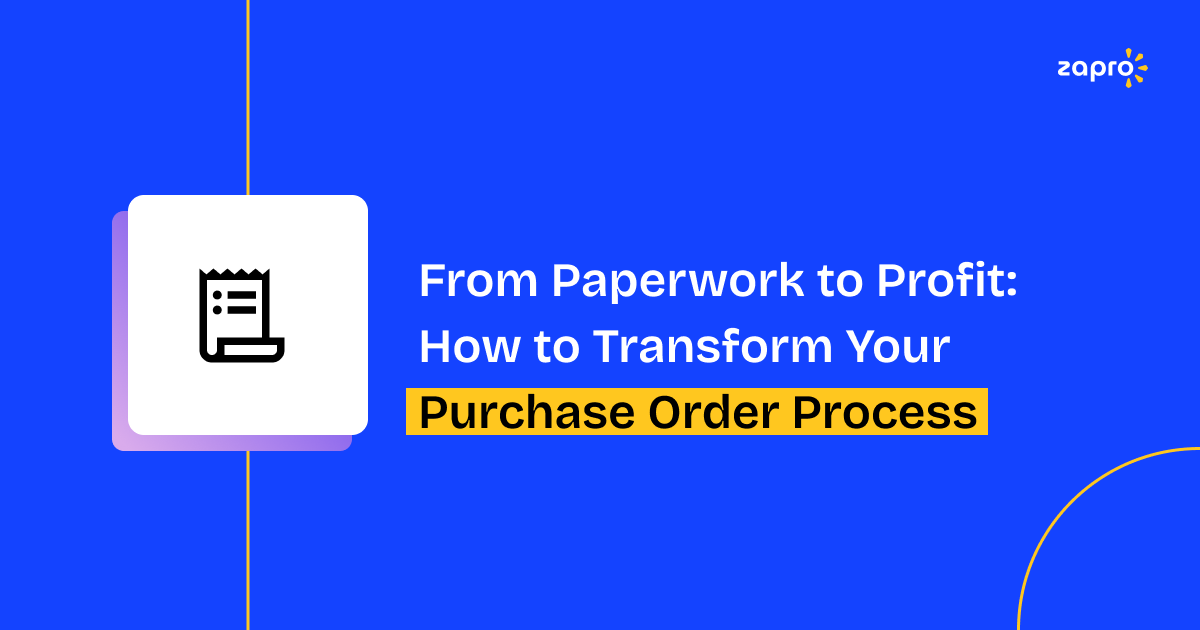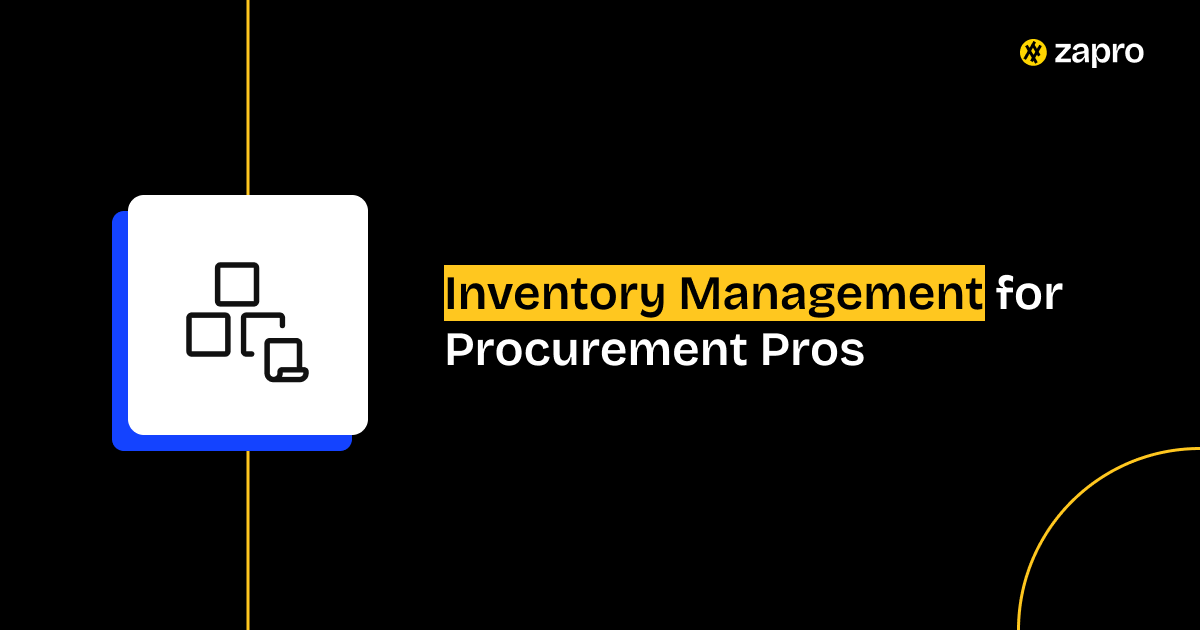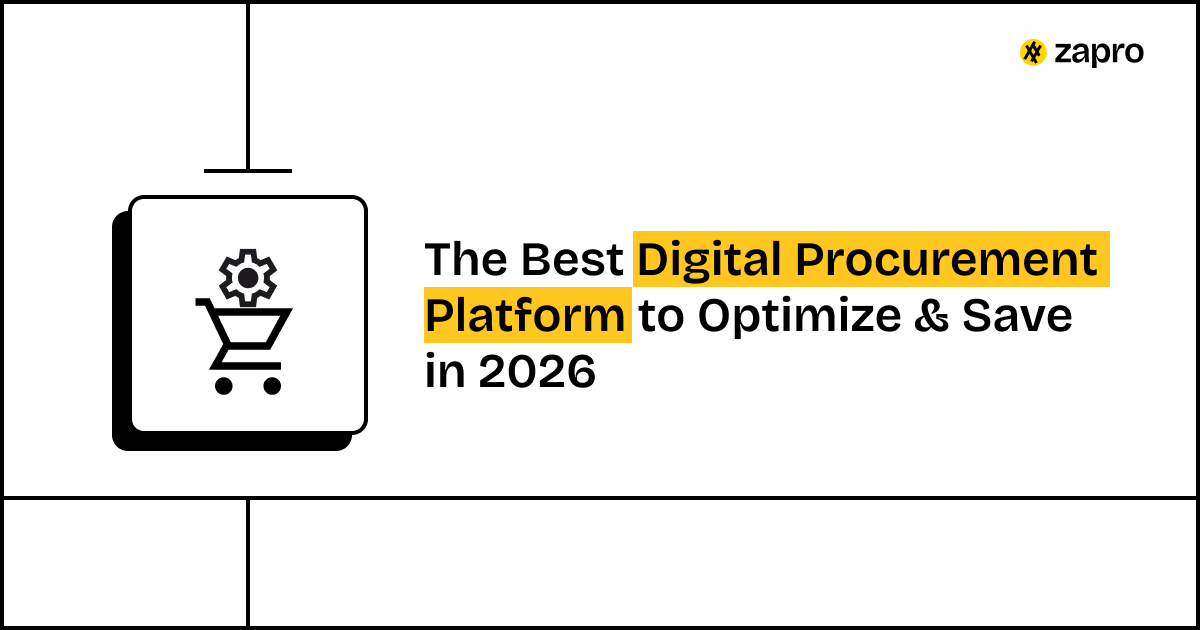Transformation of your purchase order process will lead to profit growth!
As a member of procurement or finance, you understand that purchase orders function as vital components that sustain spend control, operational efficiency, and compliance.
The right execution of purchase orders transforms them from basic documentation into essential strategic tools. Purchase orders help organizations maintain budget control and protect against costly mistakes while creating an auditable record system. Improper handling of POs results in vendor issues and extensive audit-related work for finance teams.
The 2023 Ivalua survey reveals that 53% of procurement and supplier management processes remain manual, causing teams to lose 22% of their time through paper-based work and manual error correction. The amount of lost productivity reaches substantial levels.
This guide provides your organization with a framework to move purchase orders system from manual paperwork to an advanced procurement strategy, supported by Zapro.ai.
What is the purchase order cycle?
The supplier receives a purchase order tracking from the buyer as a legally enforceable document confirming all product and service details, including quantities, prices, and agreed terms, prior to delivery.
A purchase order operates beyond transaction confirmation to serve as an essential
control mechanism that ensures:
- Approvals happen before spending
- Terms are clear and documented
- The agreement becomes a common understanding for both the buyer and the supplier
The PO operates as a procurement GPS, guiding operations by specifying routes and tracking progress for future reference.
Anatomy of a Well-Structured Purchase Order
The most effective POs include:
- A specific PO number to enable traceability
- Item descriptions & quantities to prevent scope creep
- Pricing & payment terms that support budgetary requirements
- Delivery timelines to synchronize supply chain planning
- Shipping instructions for accurate fulfillment
- Dispute resolution clauses to address exceptions systematically
With these details, your PO transforms into a compliance-ready vendor relationship tool that functions as an audit-proof document.
Purchase order cycle steps

Procurement software teams have a holisitic approach and purchase order process in place to manage requesting, approving, issuing, tracking, and closing.
The PO process includes:
1. Purchase order creation
The process begins when employees submit internal requests specifying requirements, explanations, quantity needs, and deadline information.
Zapro Tip: Zapro.ai validates requisitions against approved vendors, budget limits, and historical pricing before they even hit the approval queue.
2. Budget check and requests for proposal (RFP)
The requisition for proposal (RFP) passes through managerial or financial evaluations to verify adherence to organizational policies and budgets.
Zapro.ai allows users to establish automated approval procedures that boost efficiency and prevent delays.
3. Create and Send the Purchase Order
The vendor receives the approved PO for action. The platform automates vendor detail, term, and price retrieval from contracts, decreasing human error.
4. Vendor qualification and selection
The supplier confirms receipt and agrees to the terms.
Digital acknowledgment tracking through Zapro.ai removes uncertainty about supplier receipt of purchase orders.
5. Delivery and quality check
The supplier delivers according to agreed terms. The received goods are run through the quality inspection check.
Zapro.ai enables the inclusion of product specifications or service-level agreements (SLAs) within purchase orders to prevent miscommunications.
6. PO Matching and Closure
The invoice is compared against the PO and goods receipt records to verify consistency. The finance team executes payments based on agreed terms. After completion and payment, the PO is closed and records are preserved for audits.
AI-powered matching in Zapro Automation instantly flags discrepancies.
Zapro Advantage: Centralized storage makes retrieval instant.
Zapro.ai Platform Manages the Entire PO Cycle For You
A solid PO process delivers:
- Budget Discipline – Stops unapproved spending before it starts
- Faster Approvals – Clear workflows prevent delays
- Audit-Readiness – Every action is logged
- Better Vendor Relationships – Terms and expectations are clear
- Time Savings – Automation frees teams from admin work
Stat: According to the Hackett Group, top procurement tool teams using automated POs achieve 21% operational cost savings.
The Business Impact of Automating Purchase Orders
Manual purchase orders are time-consuming, error-prone, and costly. According to APQC, manual purchase order processing costs $506 per order. Top performers cut this to under $35 through automation.
With Zapro.ai, you can:
- Cut cycle times by 30–50%
- Eliminate processing errors
- Gain real-time spend tracking for better forecasting
Learn about Purchase request email.
How Zapro.ai Transforms Purchase Order Management
Most PO tools focus on transactions. Zapro.ai combines intelligence, collaboration, and control to go beyond basic functionality.
Key Features:
- Smart Approvals – Risk-based workflows that adapt to value and urgency
- Vendor Integration – Direct connections to supplier catalogs
- Context-Rich POs – All related notes, chats, and files in one view
- Spend Analytics – Forecast and flag unusual patterns in real time
- Risk Signals – Alerts for unreliable vendors before issuing POs
Result: Less time chasing signatures and emails, more time for strategic procurement.
Learn about best procurement software.
Pro Tips for a Better PO Process
- Standardize templates to prevent missing details
- Integrate with ERP to align finance and procurement
- Use pre-approved vendor lists to reduce risk
- Set automated alerts to avoid missed deliveries or renewals
Final Thoughts
By now, you should have understood that PO is completely different from the regular buying processes. That is because it controls mechanisms, compliance tools, and clarity enablers.
With Zapro.ai digitizing and automating the complete process, they are never less than a strategic edge that helps better spend management, faster operations, and stronger supplier partnerships.
If your teams still follow the traditional way of getting approvals through email and maintain spreadsheets for tracking then it is time to step up your PO process.
Zapro.ai helps organizations transition from reactive firefighting to proactive procurement leadership.
Start Optimizing Your Purchase Orders Today.

Frequently Asked Questions (FAQs)
1. What’s the difference between a purchase requisition and a purchase order?
In simple terms, a requisition is an internal request to buy. However, a purchase order is the approved, formal document sent to a supplier.
2. Why use digital PO software?
The digital PO software helps automate approvals, decrease errors, and centralize data. It provides real-time visibility into spending.
3. Can small businesses benefit from PO automation?
Yes. PO software for small business teams is affordable, scalable, and time-saving.
4. How does Zapro.ai improve POs?
Zapro.ai lets you automate workflows, integrate vendor data, and provide real-time spend analytics.
5. How do POs help with compliance?
Every purchase follows approved policies and is fully documented for audits.
Don’t miss our weekly updates
We’ll email you 1-3 times per week—and never share your information.

 Healthcare
Healthcare Financial Services
Financial Services Technology
Technology Venture Capitalist
Venture Capitalist Chief Procurement Officer
Chief Procurement Officer Chief Financial Officer
Chief Financial Officer




